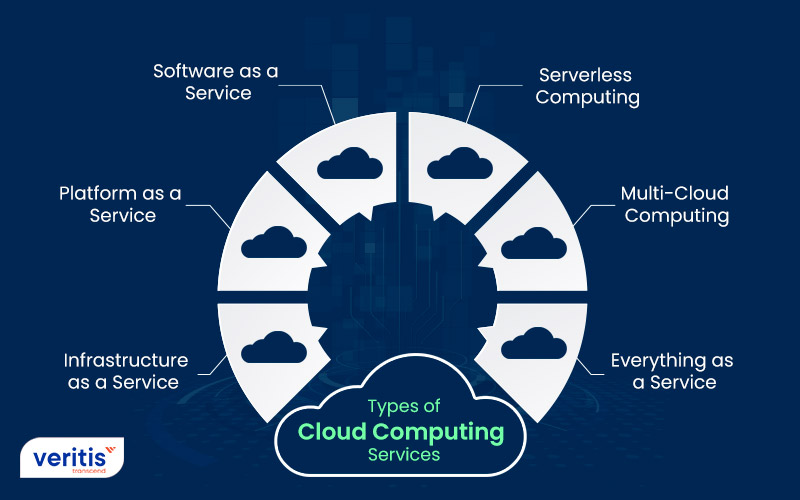Vital Tips for LinkDaddy Cloud Services: Maximizing Your Universal Cloud Service Strategy
Simplify Your Framework With Cloud Provider
As businesses browse the ever-evolving landscape of modern technology and information monitoring, the function of cloud services in streamlining facilities has become progressively prominent. The attraction of streamlined procedures, improved efficiency, and boosted resource allocation via cloud solutions is obvious. Nevertheless, the trip towards an extra active and economical IT facilities entails more than simply migrating to the cloud. It needs a critical approach and a deep understanding of the subtleties of cloud fostering. So, just how can businesses successfully navigate this change and genuinely unlock the capacity of cloud solutions for simplifying their facilities?
Advantages of Cloud Solutions
Cloud solutions provide a streamlined strategy to handling IT facilities, giving businesses with scalability, versatility, and cost-efficiency. One of the essential benefits of cloud services is the scalability they offer. Companies can quickly scale their resources up or down based on need, guaranteeing they just spend for what they make use of. This adaptability is specifically useful for businesses with varying requirements or those experiencing development.
Furthermore, cloud services remove the requirement for companies to buy costly software and hardware. This cost-efficiency is a significant benefit, especially for tiny to medium-sized business wanting to minimize ahead of time expenses. By utilizing cloud solutions, businesses can access high-quality IT resources without the large cost connected with typical framework arrangements.
Additionally, cloud solutions offer organizations with the flexibility to access their information and applications from anywhere with an internet connection. This level of availability improves partnership among teams, makes it possible for remote work, and raises overall productivity. The versatility supplied by cloud services equips companies to adjust rapidly to changing market problems and consumer demands.
Price Financial Savings and Scalability
Along with the operational benefits highlighted earlier, the combination of cloud solutions into a business's facilities produces considerable expense savings and boosted scalability. Cloud solutions supply a pay-as-you-go model, permitting businesses to scale resources up or down based on current demands, therefore staying clear of the costs connected with maintaining excess capacity. This flexibility makes it possible for firms to adjust quickly to changing needs without incurring unnecessary costs.
Furthermore, cloud services eliminate the demand for ahead of time financial investments in equipment and software, reducing capital expenditures. Operating costs are likewise lessened as firms no longer need to manage and maintain physical servers, causing reduced power intake and IT staffing costs. Furthermore, cloud solutions provide automatic updates and maintenance, ensuring that the facilities stays safe and current without requiring hand-operated treatments.
Enhanced Security Procedures
Applying stringent safety actions is extremely important when integrating cloud services right into a company's facilities to guarantee and safeguard delicate information conformity with sector policies. Cloud service providers offer enhanced protection functions such as data security, firewall software protection, and multi-factor authentication to minimize cybersecurity dangers.
Moreover, routine protection audits and conformity assessments aid make certain and identify susceptabilities adherence to industry standards. Firms can likewise benefit from features like automatic safety updates and real-time hazard tracking provided by cloud company. address By focusing on safety and security actions and staying aggressive in attending to potential dangers, services can confidently take advantage of cloud solutions while protecting their valuable information from unauthorized access or breaches.
Transitioning to Cloud Facilities
To successfully incorporate cloud services into a business's infrastructure, a structured method that deals with the change towards cloud-based remedies is necessary. Transitioning to shadow infrastructure includes cautious preparation and implementation to make sure a smooth movement procedure. The very first step is to evaluate the existing facilities and determine which systems and applications appropriate for movement to the cloud. This assessment should consider aspects such as data sensitivity, conformity needs, and performance requirements.
As soon as the assessment is total, a migration method should be developed. This technique needs to describe the timeline, resources, and obligations for relocating each component to the cloud. It is necessary to connect this strategy clearly to all stakeholders to guarantee positioning and reduce interruptions during the shift.
During the migration tracking, testing and process are critical to identify and resolve any kind of issues without delay. Regular checkpoints should be established to track progression and make needed modifications. Furthermore, training for workers on making use of cloud services ought to be offered to ensure an effective shift and make the most of the advantages of the new infrastructure.
Ideal Practices for Cloud Adoption
Effective adoption of cloud services pivots on the critical positioning of business purposes with technological capabilities and organizational readiness. To make certain a smooth change to the cloud, organizations need to begin by carrying out a detailed evaluation of their present infrastructure and recognizing which work are click best matched for cloud movement. It is crucial to involve crucial stakeholders from different departments in the decision-making process to acquire buy-in and deal with any kind of worries early.
An additional ideal technique for cloud adoption is to prioritize safety and security and compliance. Organizations has to very carefully evaluate the safety and security measures provided by cloud provider and ensure that their data is secured according to market requirements and regulatory needs. Carrying out robust data encryption, access controls, and regular safety and security audits can aid mitigate threats connected with cloud adoption.

Conclusion

As businesses navigate the ever-evolving landscape of modern technology and information monitoring, the role of cloud services in streamlining facilities has become significantly famous - linkdaddy cloud services. Exactly how can companies successfully navigate this change and genuinely unlock the possibility of cloud solutions for streamlining their facilities?
Cloud services offer a structured technique to managing IT infrastructure, giving services with adaptability, scalability, and cost-efficiency. By making use of cloud solutions, organizations can access top quality IT resources without the substantial cost tag associated with typical infrastructure setups.
To guarantee a smooth change to the cloud, organizations need to start by conducting an extensive evaluation of their present facilities and identifying which work are best matched for cloud migration.